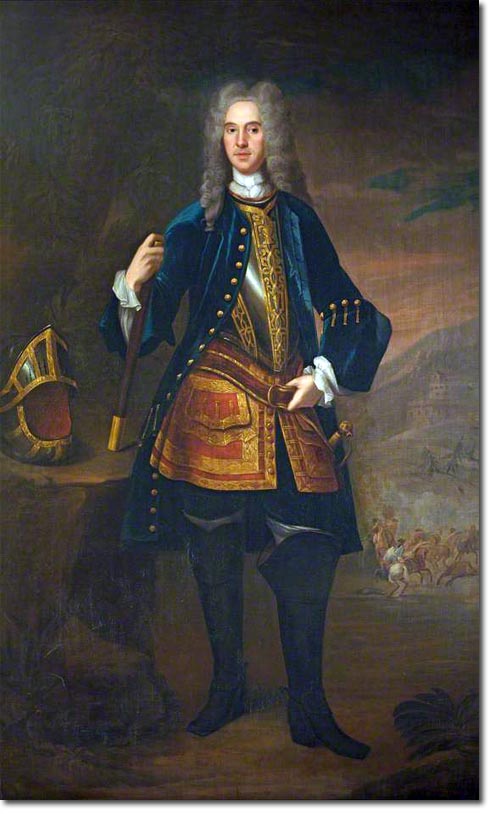|
|


|
|
George Wade (1673-1748) was a soldier and a road builder. Soldiering led him into road-building. From 1724 to 1740 he was Commander in Chief of the army in North Britain, and during this period he built 240 miles of military roads to open up the Highlands, many of which are still in use.
Wade was an Irishman. As a young man he did military service in Flanders and Spain. When he made his first visit to the Highlands in 1724, he found them in 'a state of anarchy and confusion', and virtually inaccessible to his troops. Wade had garrisons built with good Hanoverian names - Fort William, Fort Augustus and Fort George. He made new roads across the area and 30 bridges over major rivers - including a five-arch bridge over the Tay at Aberfeldy that is still in use. His roads included Dunkeld to Inverness (today's A9) and Fort William to Inverness (today's A82) as well as the Corrieyairack (Kingussie to Fort Augustus, now just a track beyond his bridge over the Spey at Garva). Wade's involvement in quelling the 1745 Jacobite Rising, when he was called back from retirement at the age of 72, was minor and inglorious. His troops failed to intercept the Jacobite army on its campaign south to Derby or, even more amazingly, on its dejected return north to Scotland. General Wade's roads and bridges helped to impose the Hanoverian government's authority in Scotland; and by 1773 James Boswell and Samuel Johnson were able to make an untroubled tour of the area. |
Timelines | 18th Century Timeline
Armed Forces | Art and Culture | Articles | Biographies | Colonies | Discussion | Glossary | Home | Library | Links | Map Room | Sources and Media | Science and Technology | Search | Student Zone | Timelines | TV & Film | Wargames